Editor’s note: This article also contains affiliate links, so we earn a small commission if you choose to buy ‒ at no extra cost to you. Happy shopping!
Headed to the hospital to meet baby for the first time?
As a first-time mom or mom-to-be, your head is probably spinning.
There are so many things to do to prepare for your new baby
From making sure you’re well-stocked on diapers, washing all the clothes from your baby shower, sterilizing bottles or your breast pump, setting up the nursery, and so much more, it seems like a never-ending list.
But there’s something that you definitely can’t skip if you have a car: safe newborn car seat installation should be a top-of-list priority.
Content warning: We’ll be discussing some hard-to-read topics like crashes and baby injury here, just so you’re aware.
In this article: 📝
- Why is a baby car seat so important?
- How do baby car seats attach?
- How do you install a baby’s first car seat?
- When should you install car seat before baby?
- What is the safest place to install an infant car seat?
- What’s the best baby car seat?
- Finding a certified child passenger safety technician
- Do local fire departments install car seats?
- Is your newborn in car seat correctly?
Why is a baby car seat so important?
When you’re thinking about everything you need to do to prepare for the arrival of your baby, installing your baby’s car seat is definitely not something you’ll want to overlook.
According to the National Highway Traffic Safety Administration (NHTSA), over half of all baby car seats are not installed correctly.
The difference between a correctly installed newborn car seat and an incorrectly installed one could literally be life and death.
So before you bring your baby home from the hospital, you’ll want to be completely confident that their baby car seat is installed correctly.
We’re here to help you navigate this journey by providing the basics on how to install a baby car seat.
How do baby car seats attach?
Whether you purchased an infant carrier with a base or a convertible newborn car seat, it is important to remember that your baby’s car seat should be rear-facing in the backseat.
The American Academy of Pediatrics recommendations states that rear-facing is the safest way for an infant or toddler to travel.
A rear-facing baby car seat provides more protection for a baby or toddler’s neck and spine, which could save their life in the event of a crash.
Before your child is 2 years old, the vertebrae in their neck and spine haven’t fully completed converting from cartilage to bone, and are more susceptible to injury.
There are two different installation methods you can choose from for both convertible baby car seats and infant carriers.
You can either install the car seat using the seat belt, or you could install it using the lower anchors in the car.
Both methods are equally safe.
However, you should choose only one method; do not try to use both at the same time.
You will also want to check your vehicle’s owner’s manual to confirm both options will work with the type of car you have.
How do you install a baby’s first car seat?
So how do you install a baby car seat?
Well, it depends on what sort of fastener you’ll be using.
How do you install a car seat without an anchor?
Below you’ll find some general pointers for installing a baby car seat using the seat belt ‒ or how to install a car seat without an anchor.
However, it’s best practice to check with both the manual for the car seat you have and the owner’s manual for your vehicle.
Doing so will help you see if there are any special considerations you’ll need to make or other methods that are recommended by the manufacturer to safely install the car seat.
- Park your car on a completely level surface.
- Put the car seat in the position you would like it in the back seat.
- Set the recline angle, if applicable, for a newborn baby.
- Locate the rear-facing belt path and thread the seat belt through this path. Double-check that the seat belt is not twisted.
- Click the seat belt in to buckle it.
- Lock the seat belt. To figure out how to do this, you’ll want to consult your vehicle owner’s manual.
- Press down on the base (or have someone press down for you) and tighten the seat belt. Continue tightening until the base or the seat does not move more than one inch when you push it at the belt path.
- Confirm that your car seat is reclined appropriately for a newborn. Most car seats and bases will have bubbles, beads, or a line that will need to be lined up in a certain way for them to be set to the correct recline angle.
Is latch better than seatbelt?
Both methods of installing a car seat (via seatbelt or lower anchor) are equally safe ‒ there is no “better”.
Just use whichever is easiest for you, mama.
Installing a baby car seat using lower anchors
Before installing a baby car seat using the lower anchors in your car, check with the car seat manual and the owner’s manual for your vehicle.
If your car was made before 2003, it may not have lower anchors, so you will need to follow the directions above to install your car seat using a seat belt.
- Park your car on a completely level surface.
- Put the car seat in the position you would like it in the backseat.
- Set the recline angle, if applicable, for a newborn baby.
- Find the exact location of the lower anchors in your vehicle.
- Attach the lower anchor clips from the car seat to the lower anchors in your vehicle. Take care to keep the straps straight, not twisted.
- Press down on the base (or have someone press down for you) and tighten the straps. Continue tightening until the base or the car seat does not move more than one inch when you push it.
- Confirm that your car seat is reclined appropriately for a newborn. Most seats and bases will have bubbles, beads, or a line that will need to be lined up in a certain way for them to be set to the correct recline angle.
When should you install car seat before baby?
It’s a good idea to install your newborn car seat before baby arrives, so you’re ready to go when they make their grand entrance into the world.
Around weeks 37 to 39 of pregnancy is a good time, just in case baby decides to make their appearance a little earlier than expected.
If baby arrives any earlier than that, there’s a chance they may have to spend some time in NICU, so you’ll have a chance to install your newborn car seat before they come home.
What is the safest place to install an infant car seat?
The American Academy of Pediatrics recommends that all baby car seats are installed rear-facing in the back seat of your car.
This is to protect baby from the airbags, which can be dangerous, even in a rear-facing car seat.
In fact, they recommend that all children under the age of 13 should ride in the back seat, as airbags are designed to protect adults in the event of a crash, and can be harmful to children.
However, if you have a car with front seats only, it’s advised to position the seat for baby’s car seat back as far away from the dashboard as possible.
Does car seat go behind driver or passenger?
Whichever is easiest for you ‒ the AAP guidelines don’t specify whether a baby car seat should be on the driver’s side or the passenger’s side.
But our Peanut mamas say that having baby’s car seat in the rear passenger side is much better if you’re driving, so you can check on baby more easily.
Why is the seat behind the driver the safest?
Contrary to popular belief, putting baby’s car seat in the back seat behind the driver isn’t any safer than the rear passenger seat.
Both are considered equally as safe for a newborn car seat.
What side should car seat be on?
Either side of the back seat is considered safe for installing a baby car seat ‒ whichever you prefer, mama!
Why is the middle the safest for a car seat?
Technically speaking, the middle back seat is the safest seat in a car.
This is because it’s generally furthest away from any point of collision.
However, some baby car seats can’t be installed in the middle rear seat because they don’t have the same fastenings compared to the side seats.
But if you can safely secure baby’s car seat in the rear middle seat, it’s a great option.
When can baby face forward in car seat?
So we know that rear-facing car seats are best for babies, but when can baby face forward in car seat, according to 2022 guidelines?
Well, the AAP recommends baby staying in a rear-facing car seat in the back seats until the age of 2 years old.
So from birth, baby should be in a rear-facing car seat in the back seat of your car, then from 2 years old, they can use a forward-facing car seat in the rear of your car.
They should stay in their forward-facing car seat until they outgrow it ‒ checking with the car seat manufacturer to see what their guidelines are.
From that point, they should use a booster seat ‒ still in the back seat of your car ‒ until they’re 4ft 9 inches tall (around 8-12 years old).
Then, they can graduate to not using any car seat or booster, but they should still be sat in the rear seats of your car until 13 years old.
At which angle should a car seat be installed?
Most baby car seats should be installed at a 30-45 degree angle to ensure baby’s comfort and safety.
Essentially, baby should be able to lean back slightly with their head upright.
What’s the best baby car seat?
So how do you choose the best baby car seat for you and your little peanut?
Well, that choice is yours, mama ‒ but here are a few of the top picks from our Peanut community:
Best car seat for newborns
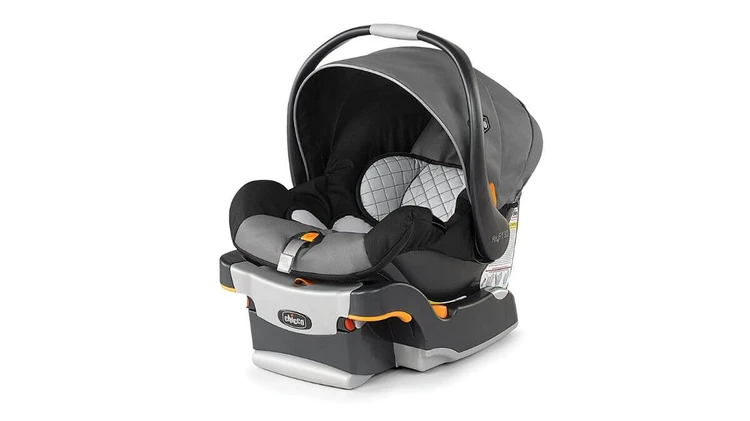
1. Chicco KeyFit 30 Infant Car Seat and Base
This Chicco car seat is perfect for teeny babies from 4lbs, suitable from birth until baby’s about 30lbs.
One of our Peanut mamas’ favorite features is the removable, washable seat pad ‒ a must for easy clean-up.
Colors: Black, Calla, Encore, Iron, Orion, Pewter, Q Collection
Suitable for: 4lbs to 30lbs (birth to approx. 18-24 months)
Price: $219.99+
Best car seat for toddlers
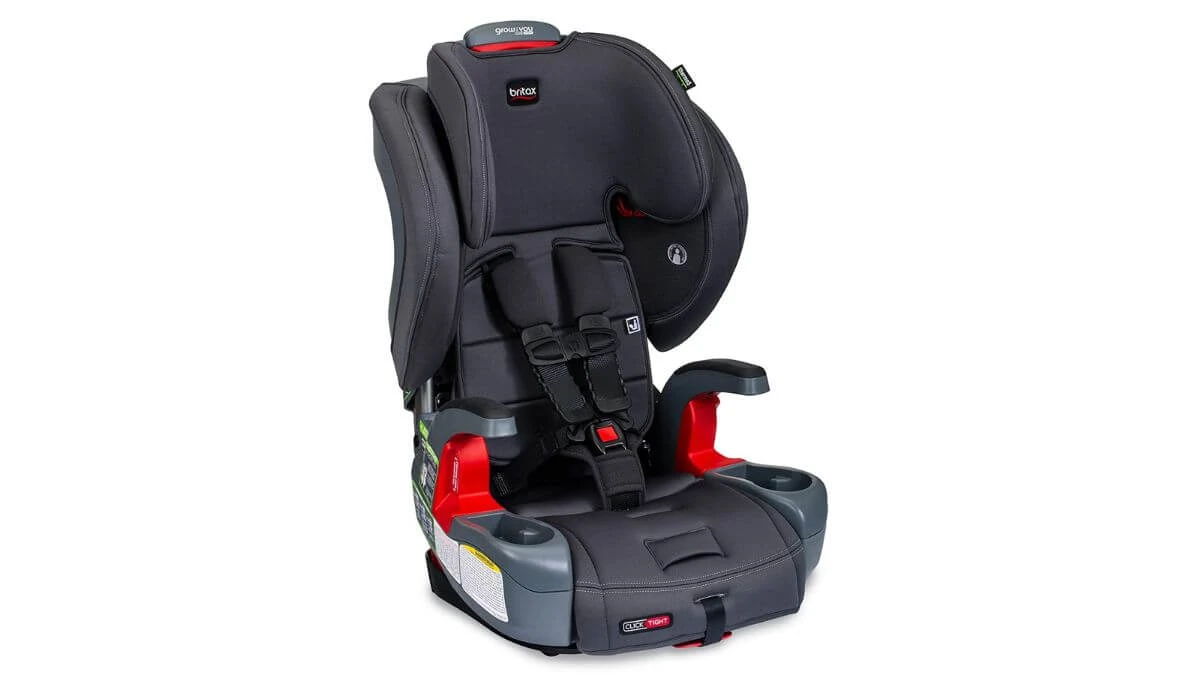
2. Britax Grow with You ClickTight Harness-2-Booster Car Seat
The Britax car seat is perfect for car rides with toddlers, and suitable for bigger kids, too!
Worried your little one will overheat in the car? Well, the Britax car seat has a mesh fabric, for a cooler ride.
Colors: Asher, Cool Flow Gray, Cool Flow Teal, Cool n Dry, Dusk, Jet, Mulberry, Otto, Pebble, Safewash Cobblestone, Safewash Cowmooflage, Seaglass, Spark, Stainless
Suitable for: 25lbs to 120lbs (approx. 20 months to 8 years old)
Price: $349.99+
Best booster seat for children
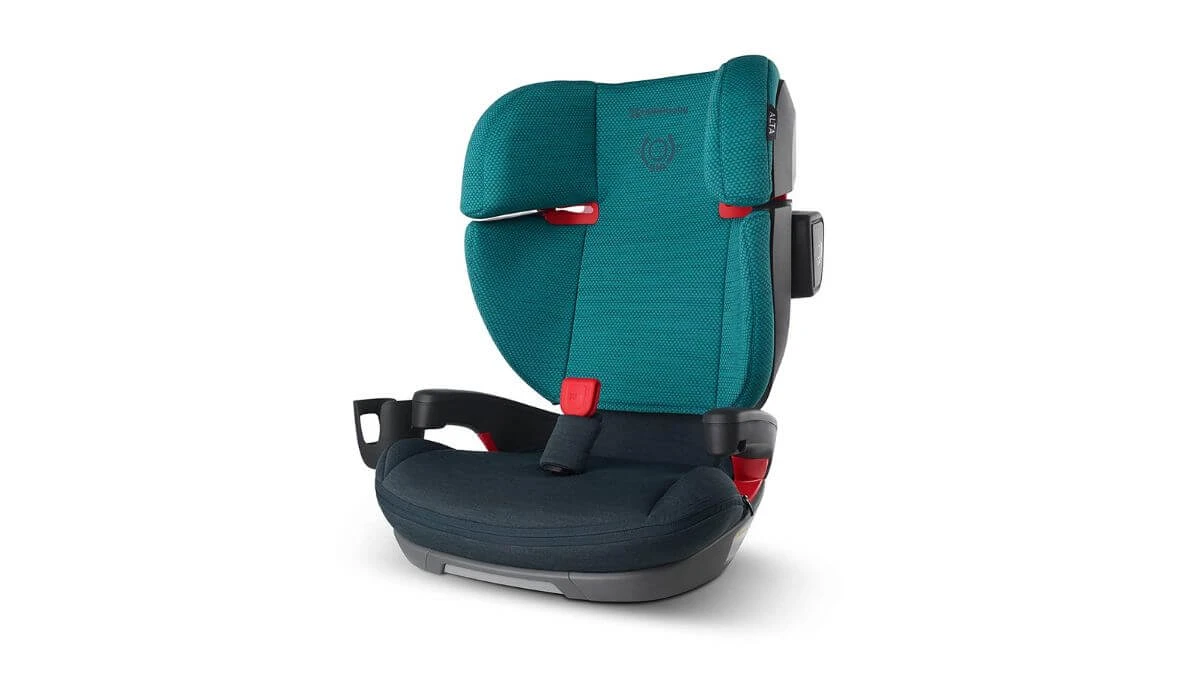
3. UPPAbaby ALTA Booster Seat
Traveling with bigger kids?
Then you’ll want this Uppababy car seat ‒ a secure booster seat for children aged 6 and up.
Comfy, easy to clean, and with a built-in cup holder? Add to cart!
Colors: Black Melange, Charcoal Melange, Teal Melange, Gray Melange
Suitable for: 40 lbs to 100lbs (approx. 6 to 10 years old)
Price: $179.99+
Best portable car seat
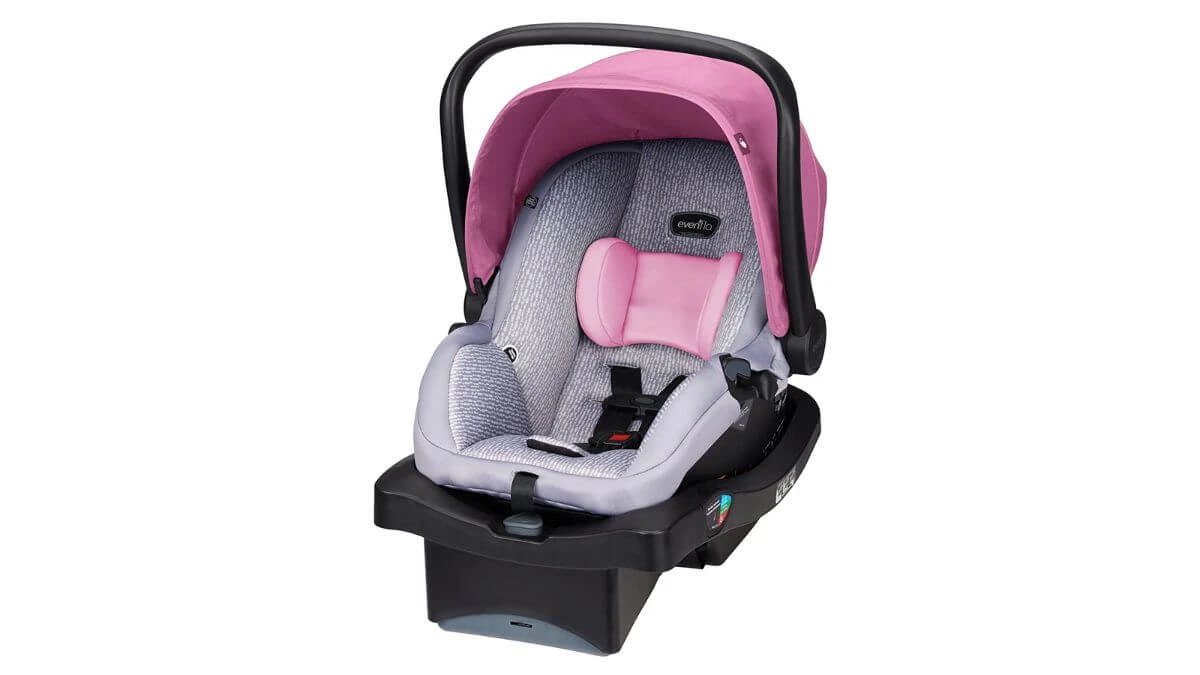
4. Evenflo LiteMax Infant Car Seat
Want something that’s secure in the car but portable so you can move baby without waking them up after their car journey?
This Evenflo car seat is lightweight, easy to carry, provides coverage from the sun and rain, and is super secure.
Colors: Azalea, Knoxville Gray, Olympus, River Stone, Sawyer
Suitable for: 4 lbs to 35lbs (birth to approx. 3-4 years old)
Price: $112.99+
Best car seat set
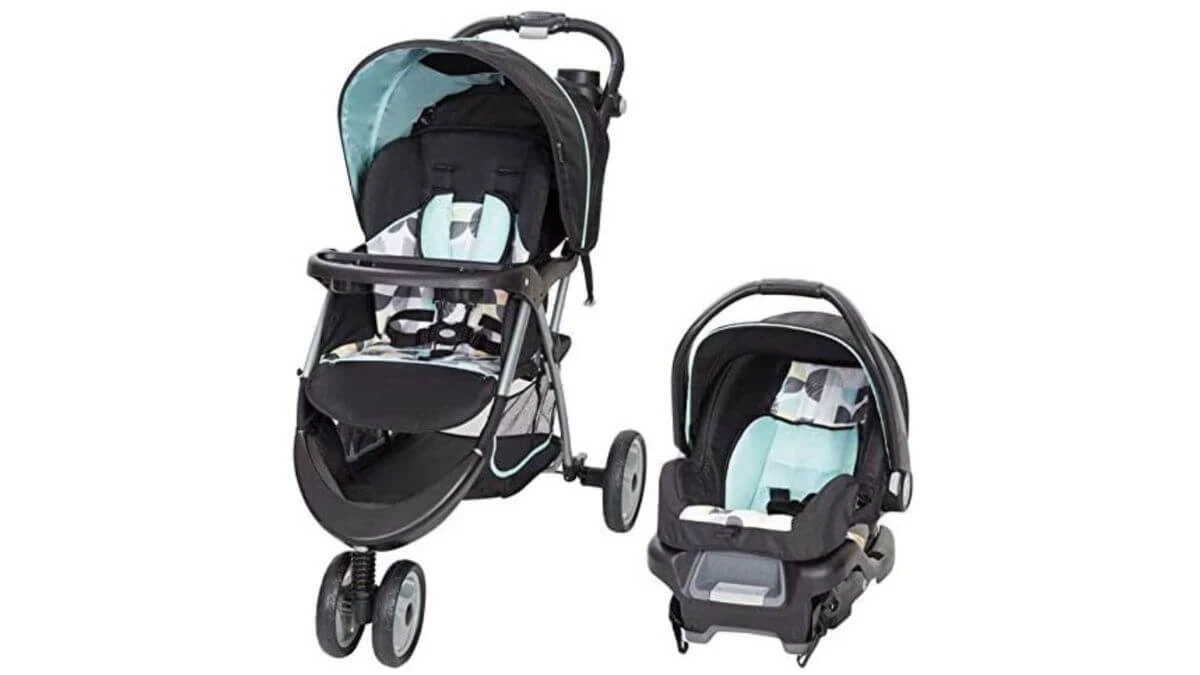
5. Baby Trend EZ Ride 35 Travel System
Why not get your stroller and car seat at the same time?
Enter the Baby Trend car seat and stroller travel system.
Take baby out on the go ‒ in the car, stroller, or carrier ‒ it’s a 3-in-1!
Colors: Doodle Dots, Sophia
Suitable for: 4 lbs to 35lbs (birth to approx. 3-4 years old)
Price: $169.99+
Best ‘grow with me’ car seat
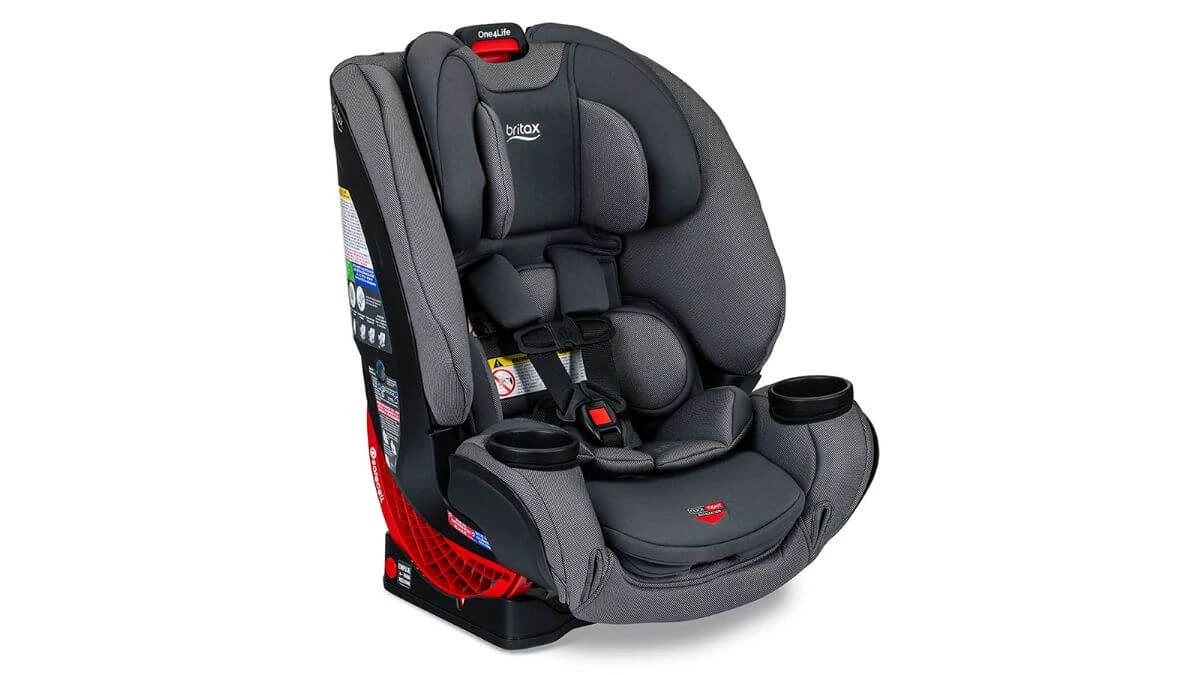
6. Britax One4Life ClickTight All-in-One Car Seat
How about a car seat that will grow with your baby ‒ one that you can use for years?
Get more bang for your buck with this Britax car seat, designed for up to 10 years of use.
Colors: Black Diamond, Cadet, Cool Flow Teal, Cool n Dry, Drift, Plum, Spark
Suitable for: 5 lbs to 120lbs (birth to approx. 8 years old)
Price: $399.99+
Best combo car seat and stroller

7. Doona Infant Car Seat & Latch Base
We’ve seen stroller and car seat sets, but what about a car seat that turns into a stroller?
No, you’re not dreaming (although baby will be).
The Doona car seat transforms into a stroller in seconds.
Sure, it may take a few goes the first few times, but before long, you’ll be a pro.
Colors: Blush Pink, Flame Red, Greyhound, Nitro Black, Racing Green, Royal Blue
Suitable for: 4 lbs to 35lbs (birth to approx. 3-4 years old)
Price: $550.00+
Best revolving car seat
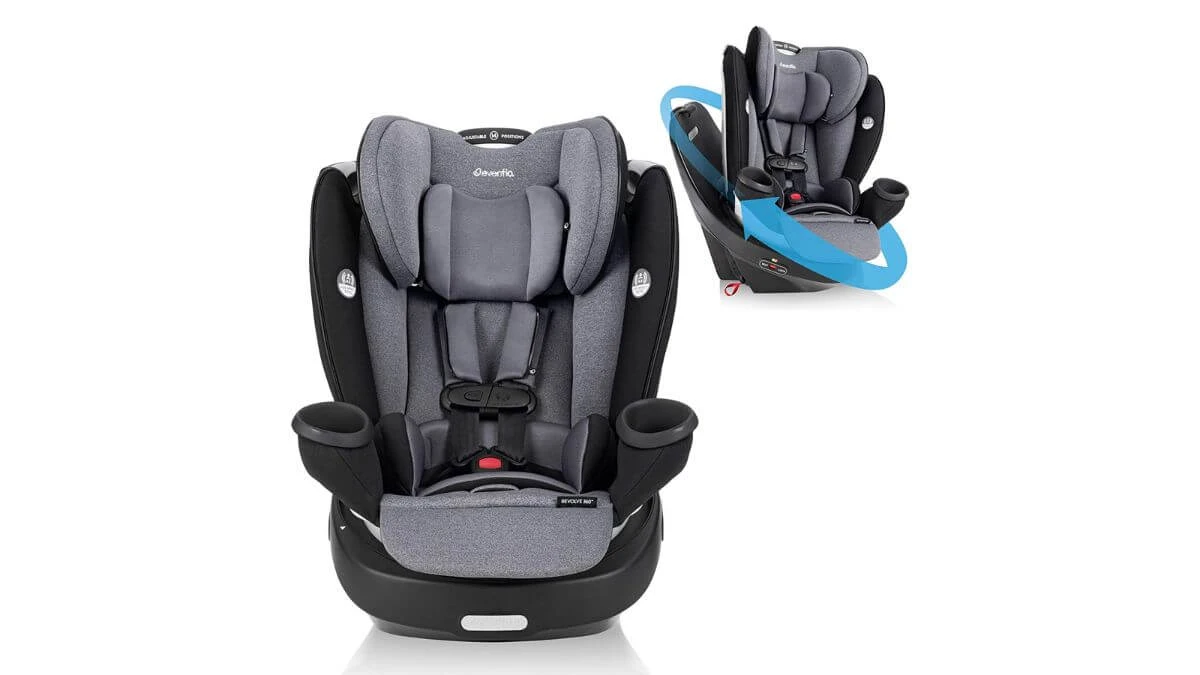
8. Evenflo Gold Revolve360 Rotational AllinOne Car Seat
Swivel car seats can make getting baby out of the car much easier.
No more awkward maneuvering ‒ with this Evenflo car seat pivots so you can get easy access to baby, with a safety latch when you’re on the move.
Colors: Moonstone Gray, Onyx Black, Opal Pink, Sapphire Blue
Suitable for: 4 lbs to 35lbs (birth to approx. 3-4 years old)
Price: $379.99+
Best budget car seat
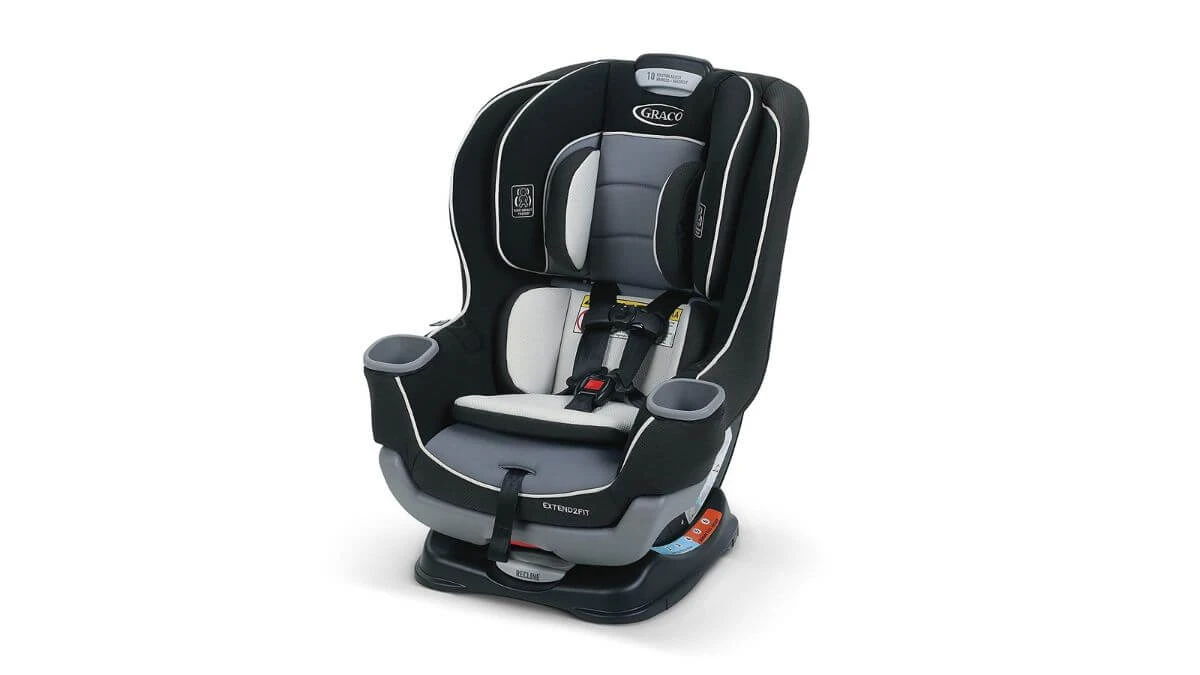
9. Graco Extend2Fit Convertible Car Seat with Extend2Fit
After a car seat that won’t break the bank?
This Graco car seat is easy on the wallet without compromising on safety.
Colors: Garner, Gotham, Kenzie, Norah, Spire, Stocklyn
Suitable for: 4 lbs to 65lbs (birth to approx. 6-8 years old)
Price: $234.99+
Finding a certified child passenger safety technician
After you’ve installed your newborn car seat, it’s a good idea to have a certified child passenger safety technician (CPST) confirm it’s been installed correctly.
CPSTs are up to date with all the current safety rules and regulations, so you can make sure your baby is as safe as possible when you’re on the go.
They have a good deal of experience installing different types of car seats in a variety of vehicle types and can help ensure that your baby car seat is in safely and securely.
Do local fire departments install car seats?
Many local fire departments and/or police stations have a CPST who will be able to help you check your baby car seat.
Call to confirm a CPST is available to help you and set up an appointment to have their seat checked.
Some areas also have set car seat safety check events at specific times during the week or month.
You may be able to find one of these events in your area as well.
Is your newborn in car seat correctly?
Before beginning to secure your newborn in their car seat, you’ll want to make sure they’re not wearing anything too bulky.
Padded coats can prevent you from getting a tight enough fit with the straps, which could stop the seat from being able to do its job correctly in the event of a crash.
Here are some general steps to follow when securing your newborn into their car seat before heading home.
Again, it will be important to consult with the manual for their car seat to make sure there are no special instructions to follow specific to their car seat.
- Make sure baby’s back and bottom are all the way against the car seat.
- Move the harness straps over your child’s shoulder. When rear-facing, the harness straps should come from right below their shoulders. You may need to adjust the straps (the manual for your specific car seat can give you instructions on how to do this. You will also want to ensure that the straps are not twisted.
- Buckle the chest clip and the harness buckle, then tighten until they’re snug. To make sure the straps are tight enough, try to pinch the strap over your child’s shoulder. If you can pinch any excess strap, you’ll need to tighten them a bit more.
- Nothing should be in the car seat with your baby. Make sure there are no blankets near their face or anything that could harm them should they go flying in a crash.
Your baby’s car seat’s job is to protect them in the event of an accident.
Doing everything you can to make sure the car seat is correctly installed and your baby is secure in the seat will help the seat do its job and keep your little one safe.
Happy travels!

